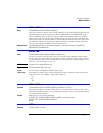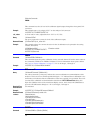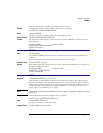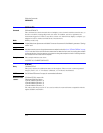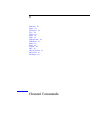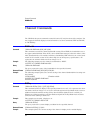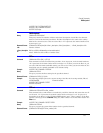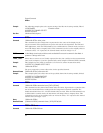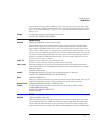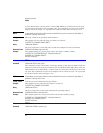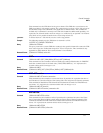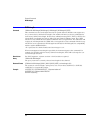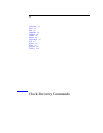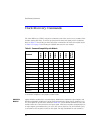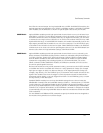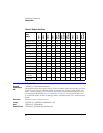
8-5
Channel Commands
PROBe:SELect
This command starts the probe’s calibration for the selected channel. It has the same action
as the command :CALibrate:PROBe CHANnel<N>. For more information about probe calibra-
tion, refer to “Probe Calibration” on page 7-3. <N> represents the channel number and is an
integer 1 to 4.
Example The following example starts calibration for Channel 1.
10 OUTPUT 707;":CHANNEL1:PROBE:CALIBRATE"
PROBe:SELect
Command :CHANnel<N>:PROBe:SELect <probe_id>[,<meas_mode>]
This command selects an AutoProbe interface probe used in conjunction with the Agilent
N1022A probe adapter. The probes that are currently supported by this command are the
Agilent single-ended/differential 1131A, 1132A, 1134A probes and the single-ended 1152A,
1156A, 1157A, 1158A probes. <N> represents the channel number and is an integer 1 to 4. If
you elect to use an AutoProbe style probe that is not in the supported probe list, select one of
the probes from the supported list that is closest in type to your unspecified probe. This com-
mand is not available for TDR/TDT measurements. An error condition will occur if an Auto-
Probe is not connected to a channel
<probe_id> This parameter is used to select the AutoProbe type.
{P1131A | P1132A | P1134A | P1152A | P1156A | P1157A | P1158A}
<meas_mode> This optional parameter is used to set the measurement mode. The default measurement
mode is Single ENDed. Use the DIFFerential parameter for the differential probes to measure
differential signals.
{SENDed | DIFFerential}
Example The following example selects the 1134A in differential mode on channel 2.
10 OUTPUT 707;":CHANNEL2:PROBE:SELECT P1134A,DIFFERENTIAL"
Query :CHANnel<N>:PROBe:SELect?
This query returns the AutoProbe type that is attached to the specified channel. If the type of
probe that is attached is a passive or not an AutoProbe, an error will be returned.
Returned Format [:CHANnel<N>:PROBe:SELect] <probe_id>, {SEND | DIFF}<NL>
Example The following example places the current probe type in the string variable, Probe$.
10 DIM Probe$[50] !Probe variable
20 OUTPUT 707;":CHANNEL2:PROBE:SELECT?"
30 ENTER 707;Probe$
RANGe
Command :CHANnel<N>:RANGe <range_value>
This command defines the full-scale vertical axis of the selected channel. It sets up acquisi-
tion and display hardware to display the waveform at a given range scale. The values repre-
sent the full-scale deflection factor of the verticalaxis in volts. These values change as the
probe attenuation factor is changed. For TDR and TDT applications, when the TDR stimulus



